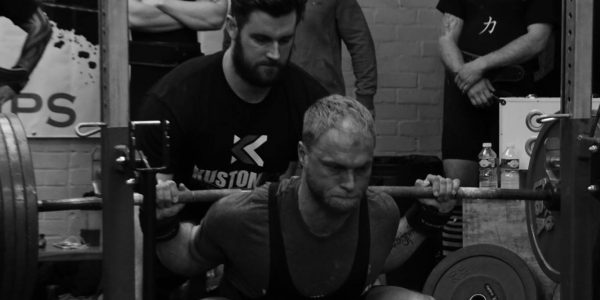Why Squat low?
Generally a full range of movement (ROM) in an exercise is going to deliver better results by using more muscle fibres, improving flexibility and placing stress in the desired places.
1/4 Squats, we’ve all seen, I’ll hold my hands up I’ve been one of them ‘1/4 squatters’ luckily I took the humble path and learned how to drop it low.
When you squat to parallel/below you recruit more of your glutes & hamstrings and you actually reduce stress on your knees compared with a partial range squat. There are studies which show the most stress on the anterior portion of knee joint is between 0-60* aka the 1/4 squat range.
Here’s a great quote from Strength coach Dan John…
“Squats don’t hurt you knees,it’s how your squatting that’s hurting your knees”
The body adapts to the stress we place on it. If we squat with proper technique they will help with developing the musculature that is responsible for moving the knee joint, improving strength & stability in the joint in the process not making it worse.
If you have healthy knees I am confident in saying squats with a full range & proper technique will have a positive effect.
So how low should you go?
Opinion is divided on this, some say ass to grass, some say parallel and some say just below parallel. I’m going to sit with the just below parallel crew.
When the hip joint is below the knee joint you have hit adequate depth.
Why not add to grass?
Well firstly I am a powerlifter so I train specific to that but even when coaching clients my aim is to get them to squat to this depth.
It’s a point where we recruit all the desired muscles, build strength in the right places and for most people isn’t too difficult to achieve compared with an ass to grass squat.
The issue I have with ass to grass squats is that it requires a high level of mobility & the excessive depth is going to reduce the load that can be used. Load/overall work (volume) is key to progressing over time.
You may be thinking “But you said use a full a ROM”
I agree I did but if I am looking for a squat that goes just below parallel this is full range for that movement.
There may be a time & place to include partial range movements within a program but on the whole, you should use full ROM where possible.
Note: For some people, full range of movement may mean using a partial range due to anatomical make up/injury or until their flexibility and ability to maintain a solid technical position improves where they can safely use a larger ROM.
Learn the ins & outs of how to squat here -> HERE

Recent Comments